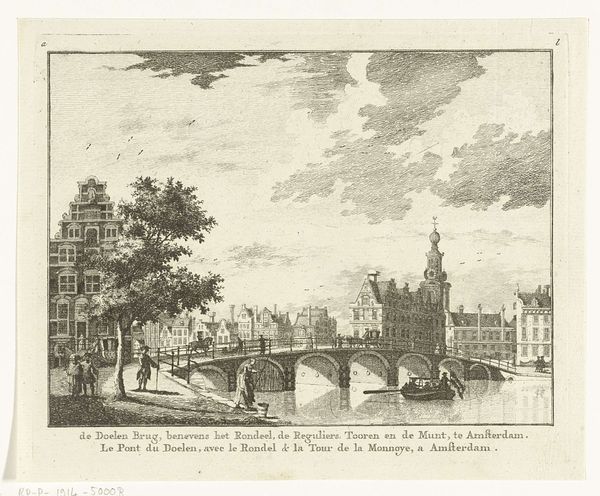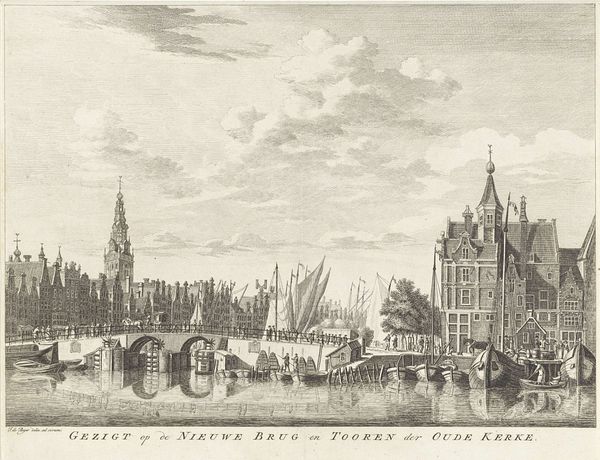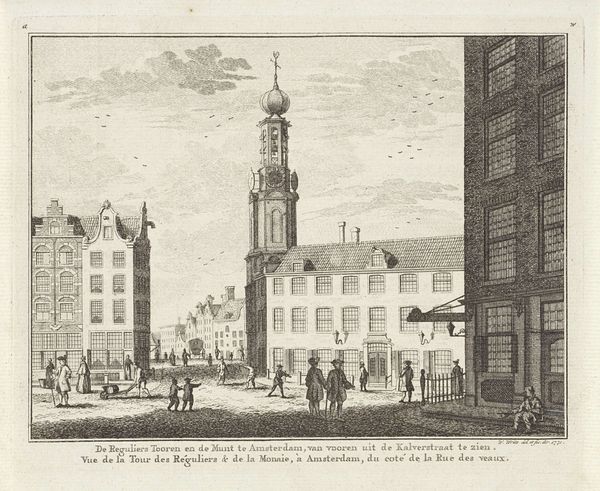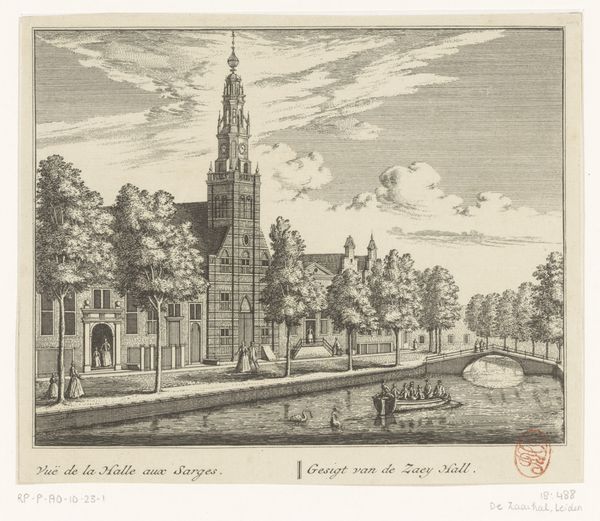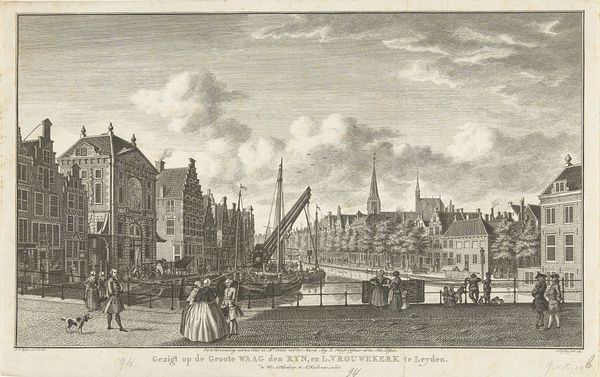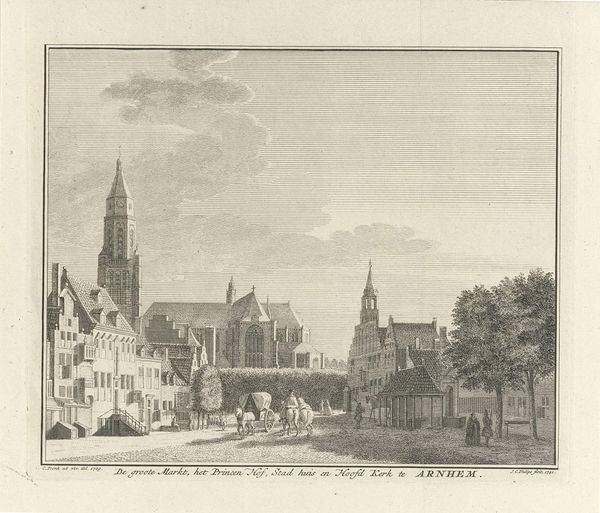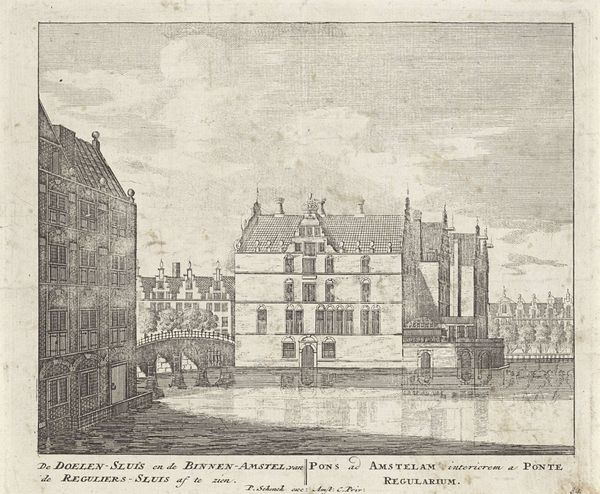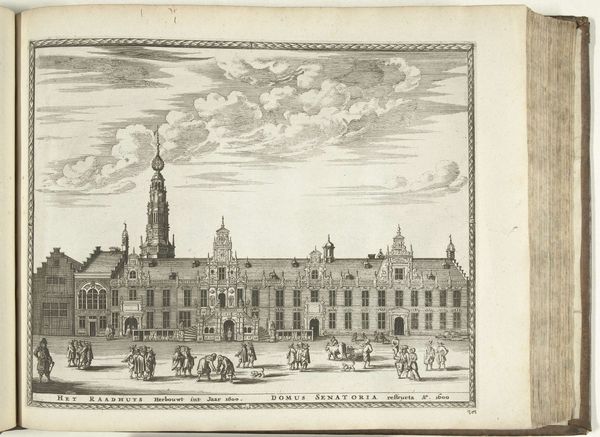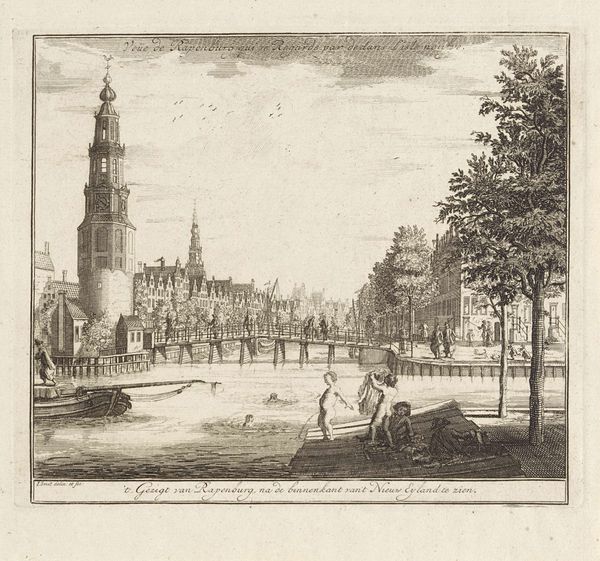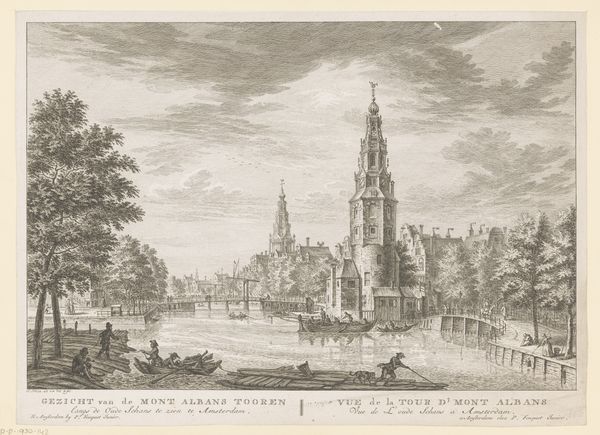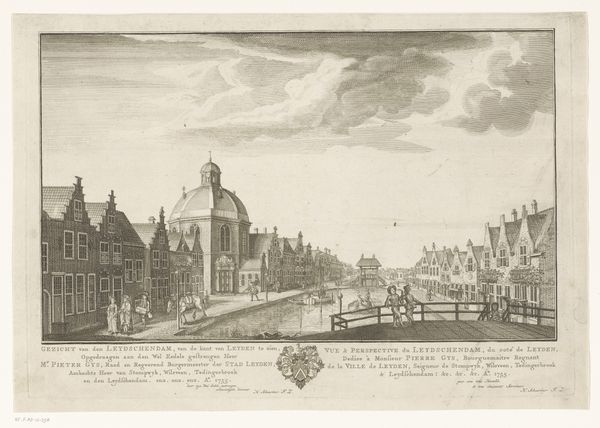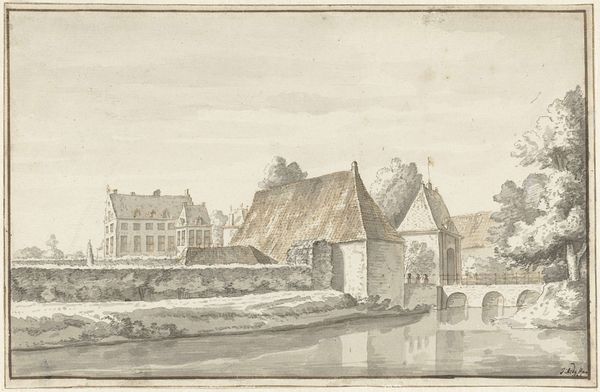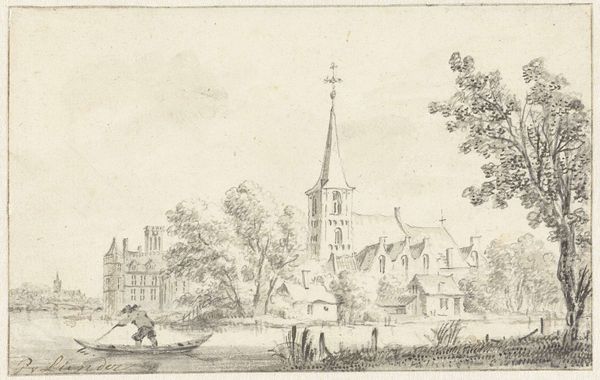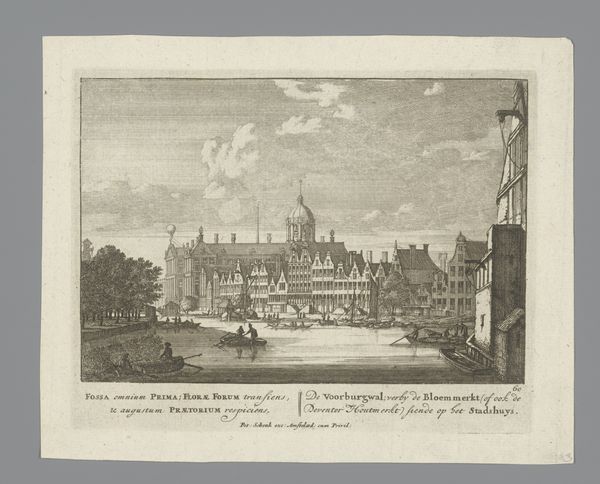
Gezicht op de Singel met de Jan Roodenpoortstoren te Amsterdam Possibly 1710 - 1766
0:00
0:00
anonymous
Rijksmuseum
print, engraving
#
baroque
#
dutch-golden-age
# print
#
landscape
#
line
#
cityscape
#
engraving
Dimensions: height 171 mm, width 201 mm
Copyright: Rijks Museum: Open Domain
Curator: There’s a remarkable stillness to this image. It's titled "View of the Singel with the Jan Roodenpoortstoren in Amsterdam." We believe it dates from somewhere between 1710 and 1766 and the Rijksmuseum attributes it to an anonymous hand. The medium is engraving. Editor: Stillness, yes, but it's also unsettling. The tower looms, dominating the cityscape, and the lines of the engraving, though precise, have an almost claustrophobic quality. There’s something inherently imposing about that architectural structure and its relationship to the relatively diminutive figures crossing the bridge. Curator: The Jan Roodenpoortstoren served as a prison in Amsterdam. Consider the psychological weight that places on the composition. The Singel itself, a canal, forms a boundary, a kind of watery threshold overlooked by the stoic architecture. The artist captured more than just a physical space. Editor: Precisely! The canal also acts as a mirror reflecting the architecture; but also as a separator dividing what is being reflected in what the world perceives as “real." It creates layers upon layers of perceived reality; the bridge becomes a symbol as well for division, transition, connection, but also the limitation of crossing between spaces; thus underscoring that sense of confinement. Even the style - those dense, almost obsessive lines are integral to conveying this. The baroque elements with Dutch golden age qualities evoke this strange relationship that gives it depth of understanding. Curator: And observe how light plays in this setting; you get a glimpse into the daily life but also an inherent darkness; creating an aura around the figures and architecture. I think what’s so compelling is that the scene suggests a narrative far beyond the depiction. We are invited to contemplate themes of confinement, freedom, the social contract, and of course, history itself. Editor: It’s the very definition of spatial storytelling; a meticulously rendered stage set prompting profound reflections. A very intriguing visual statement indeed.
Comments
No comments
Be the first to comment and join the conversation on the ultimate creative platform.
